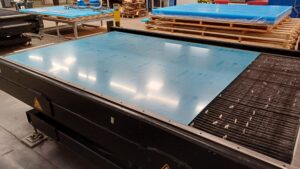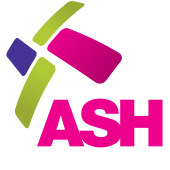At Ash Plastics, we work with acrylic every day, and we understand that our customers often have questions about this versatile material and the processes used to shape it. This page aims to answer some of the most common queries we receive about acrylic machining, CNC machining, and laser cutting.
Acrylic Material:
Q: What is acrylic?
A: Acrylic, also known as polymethyl methacrylate (PMMA), is a transparent thermoplastic often used as a lightweight or shatter-resistant alternative to glass. It’s available in various forms, including sheets, rods, and tubes, and can be clear or coloured.
Q: What are the advantages of using acrylic?
A: Acrylic offers several benefits:
- Clarity: It boasts excellent optical clarity, often surpassing glass.
- Lightweight: Acrylic is significantly lighter than glass, making it easier to handle and install.
- Impact Resistance: While not shatterproof, acrylic is much more impact-resistant than glass.
- Weather Resistance: It withstands exposure to the elements, making it suitable for outdoor applications.
- Versatility: Acrylic can be easily cut, shaped, and formed into various designs.
Q: What are the different types of acrylics?
A: There are two main types:
- Cast Acrylic: Offers superior optical clarity and is generally more expensive. It’s often preferred for intricate designs and applications where clarity is paramount.
- Extruded Acrylic: More cost-effective and readily available, it’s suitable for general-purpose applications. It may have slightly less optical clarity than cast acrylic.
Q: How do I clean acrylic?
A: Use a soft microfiber cloth and a mild soap and water solution. Avoid abrasive cleaners, as they can scratch the surface. Specialized acrylic cleaners are also available.
CNC Machining:
Q: What is CNC machining?
A: CNC (Computer Numerical Control) machining is a manufacturing process where pre-programmed computer software dictates the movement of tools and machinery to shape a workpiece. In the case of acrylic, CNC routers are used to precisely cut and shape the material.
Q: What are the advantages of CNC machining acrylic?
A: CNC machining offers:
- Precision: Highly accurate and repeatable cuts, ideal for complex designs.
- Efficiency: Can produce multiple parts quickly and consistently.
- Versatility: Suitable for a wide range of shapes and sizes.
Q: What kind of acrylic is best for CNC machining?
A: Both cast and extruded acrylic can be CNC machined. Cast acrylic is often preferred for its superior dimensional stability and lower internal stresses, which can be beneficial for intricate cuts.

Laser Cutting:
Q: What is laser cutting?
A: Laser cutting uses a highly focused laser beam to melt, burn, or vaporize material. It’s a precise and versatile method, particularly well-suited for acrylic.
Q: What are the advantages of laser cutting acrylic?
A: Laser cutting offers:
- Fine Detail: Can create intricate and highly detailed designs.
- Smooth Edges: Produces clean, polished edges that often require minimal finishing.
- Speed: Relatively fast cutting speeds, especially for thinner materials.
Q: What kind of acrylic is best for laser cutting?
A: Both cast and extruded acrylic can be laser cut. Cast acrylic is generally preferred as it produces cleaner edges and less “frosting” compared to extruded.
Q: What are the limitations of laser cutting acrylic?
A: Laser cutting has some limitations:
- Thickness: While it can cut through relatively thick acrylic, the process becomes slower and less efficient.
- Heat Affected Zone: The laser’s heat can affect a small area around the cut, potentially causing slight discoloration or melting.

General Questions:
Q: Can you combine CNC machining and laser cutting for a single project?
A: Absolutely! Combining these techniques can often produce the best results, leveraging the strengths of each process. For example, CNC machining might be used for thicker sections or complex 3D shapes, while laser cutting creates fine details and intricate edges.
Q: How do I choose between CNC machining and laser cutting for my acrylic project?
A: The best method depends on several factors:
- Design Complexity: Intricate details often favour laser cutting.
- Material Thickness: Thicker materials may be better suited for CNC machining.
- Production Volume: CNC machining can be more efficient for larger production runs.
- Budget: Laser cutting can sometimes be more cost-effective for smaller projects or intricate designs.
Q: How can I get a quote for my acrylic project?
A: Contact Ash Plastics! We’ll be happy to discuss your project requirements and provide a competitive quote. Please provide as much detail as possible, including drawings, dimensions, material specifications, and desired quantities.
You can find out more about us here and can contact us on:
Tel 0190 450 300
Email: Hello@ashplastics.co.uk
Find out more about our machining services here: https://www.ashplastics.co.uk/plastic-forming-and-fabrication/machining/

